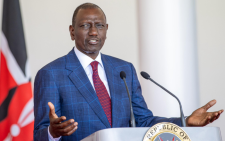Even journalists can be sucked in by fake news

Anyone who is a member of a social media group understands how difficult it is to control the spreading of misinformation and disinformation (false information intended to mislead) online.
If the problem is bad enough in professional groups – such as those of journalists, whose members are trained to tell fact from fiction – it must be worse in general groups.
But I’m more concerned about journalist groups. It could be a matter of perceptions or a change of location, but attitudes about fake news among some journalists in Kenya seem to have taken a turn that clashes with expectations.
Just four short years ago, around the time the coronavirus hit, there was a recognisable reluctance in the profession to share unverified information on social media forums. I cite the global health crisis sparked by Covid-19 in 2020 because it led to what was described as an “infondemic” of misinformation about the respiratory virus and purported treatments for it.
An implied pact among journalists, arising from their training or personal ethical concerns or both, required that they only share something useful or intellectually provocative that could be the start of a meaningful conversation or become a jumping point for a potential news story.
Of course there were he usual jesters who flouted written and unwritten rules, but when something was shared, it was often preceded or followed by a caution: check out whether this is true. This may not have gone far enough, but at least it warned news reporters to tread carefully.
Now, it seems, anything goes. Every day, I’m bombarded by uncountable bits of rubbish about everything from gossip about the private lives of notable people to unverified claims about monumental graft in high places.
Something else is noteworthy: most of the information being shared is not from reputable mainstream websites that trade in fact-based news but from obscure sources and what we used to think of as unsavoury sites that we were too embarrassed to visit or acknowledge that we visited.
These renegade websites, seemingly more popular among younger journalists, have certain characteristics in common. The most salient is clumsy, ungrammatical writing. When I raised this issue sometime ago with a former, much younger colleague, she stunned me by claiming that bad grammar and typos bestow on such websites a form of legitimacy among younger readers. But for older readers, though, bad writing is one marker of illegitimacy because it taints the credibility of the writer and the website.
Two recent examples of fake news shared on a forum that I recently joined will help illustrate the unexpected anything-goes attitudes that I found. In the first case, gruesome photos were shared purportedly showing dead Kenyan police officers allegedly killed in Haiti. It was claimed that one fallen officer had been brought back to Kenya and buried.
The claims immediately rang alarm bells. Some of us wondered why this ‘news’ hadn’t been splashed on the front pages of local mainstream newspapers or topped TV news bulletins. Also, why fly just one body back to Kenya for burial instead of everyone allegedly killed? As it turned out, it was all fake news.
A few days later, someone shared an item claiming that a well-known person in government had been detained in a foreign country for carrying hundreds of millions of dollars in a ‘briefcase’. As of this writing, that monetary figure had shrunk considerably and the (apparently fake) story hasn’t panned out, though it’s still doing the rounds online and being shared.
Why do some people feel compelled to share unverified information? It must have something to do with more than just that our smartphones make it too easy to exchange data. Many media-illiterate people struggle to tell credible sources from unreliable ones. And others share outrageous ‘news’ (even if they know it’s baseless) because they think it’s entertaining or amusing.
It’s true, this is a global problem, and Kenya isn’t among the top six countries where the spreading of fake news is an epidemic. That dubious distinction belongs to India, Brazil, Myanmar, the Philippines, the US and Russia. But Kenya could soon join this unenviable group if current trends continue.
— The writer is a Sub-Editor with People Daily












